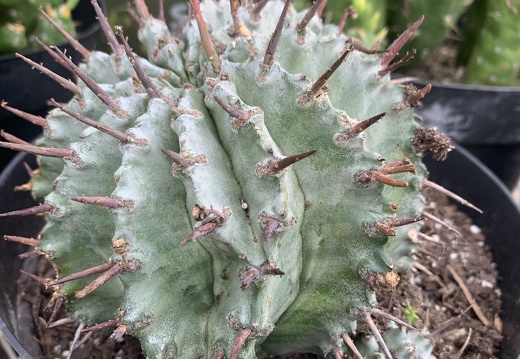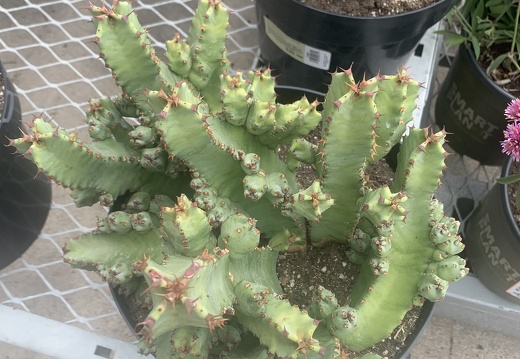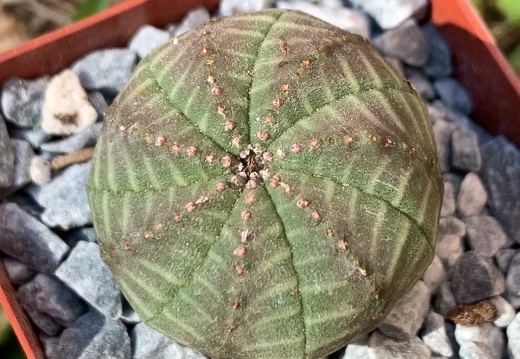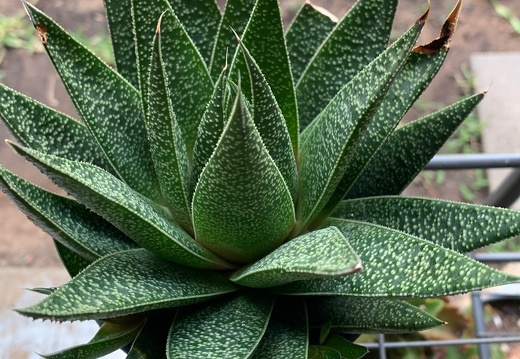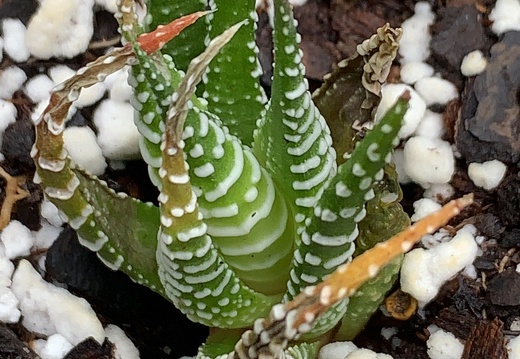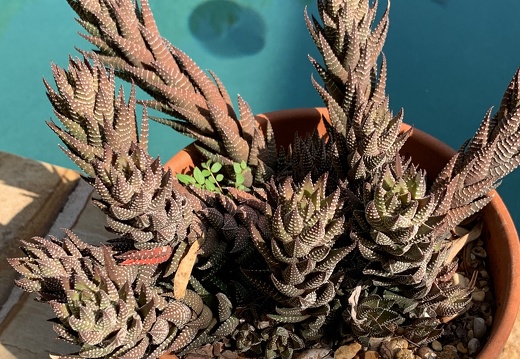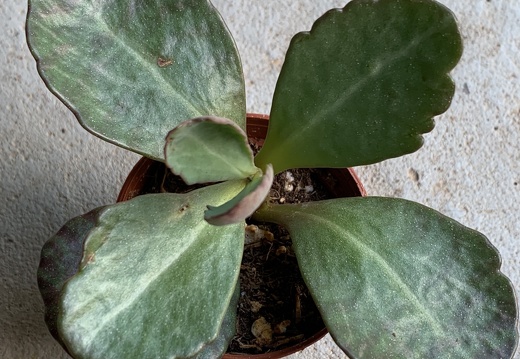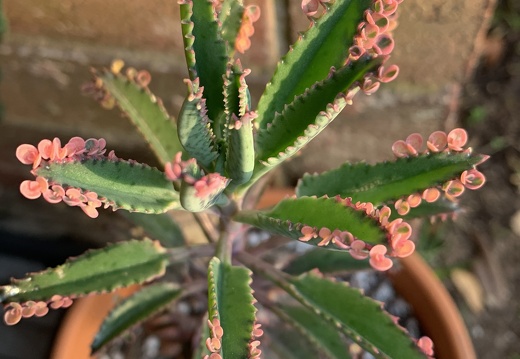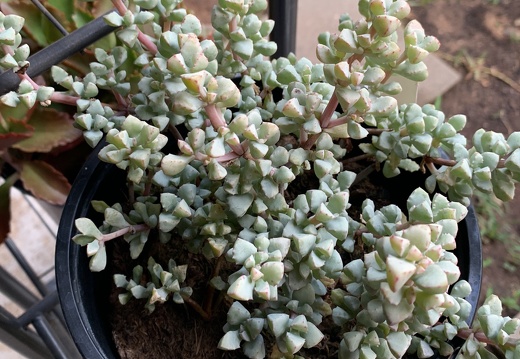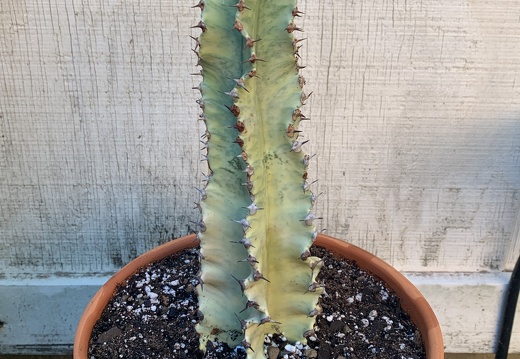
Euphorbia Ammak
Euphorbia ammak is a species of plant in the family Euphorbiaceae. It is found in Saudi Arabia and Yemen.
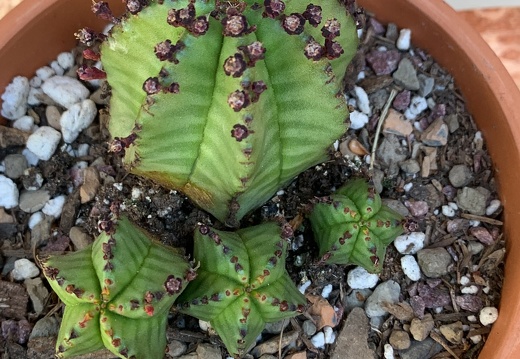
Euphorbia Anoplia
Tanzanian Zipper Plant (Euphorbia Anoplia)
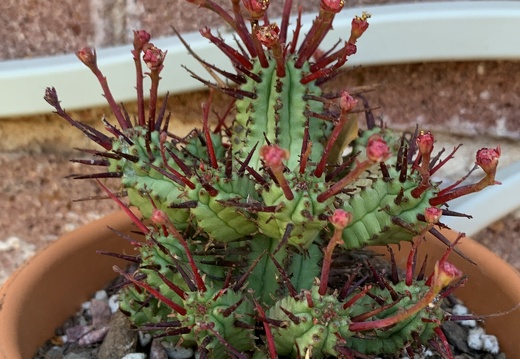
Euphorbia Enopla
Euphorbia Enopla, also known as Pincushion Euphorbia, is a unique-looking cactus native to South Africa. It's relatively easy to care for, making it a popular choice in cultivation. The vibrantly colored spines make this succulent stand out in any garden setting.
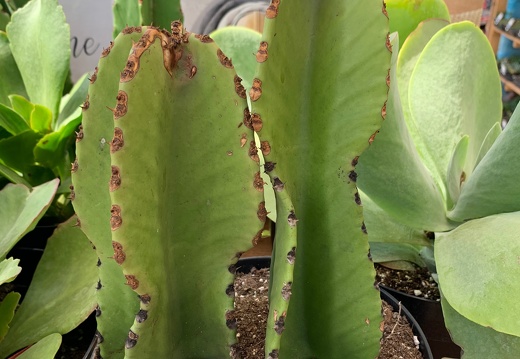
Euphorbia Ingens
Euphorbia ingens is a species of flowering plant in the family Euphorbiaceae. It is native to dry areas of southern Africa. It is popularly known as the candelabra tree or naboom. Its milky latex can be extremely poisonous and is a dangerous irritant.
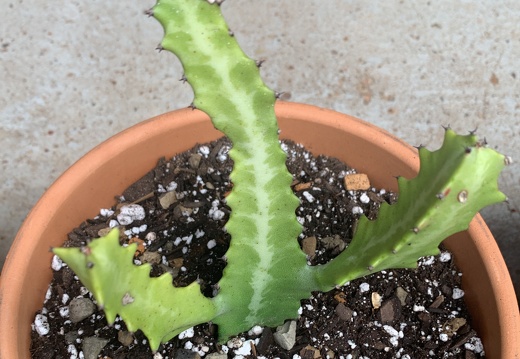
Euphorbia Lactea
Euphorbia lactea is a species of spurge native to tropical Asia, mainly in India. It is an erect shrub growing up to 5 metres tall, with succulent branches 3–5 centimetres diameter, ridged, with a triangular or rhombic cross-section; the ridges are spiny, with short spines up to 5 millimetres long.
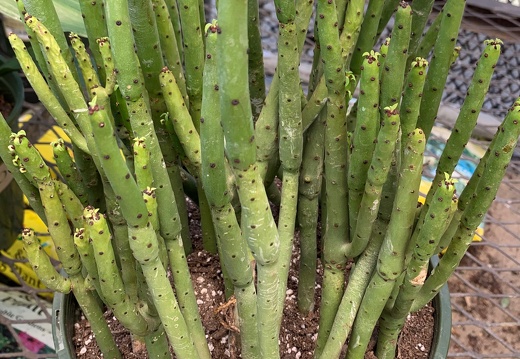
Euphorbia Leucodendron
A spineless succulent shrub that can reach a height of six feet and four feet wide. It has narrow cylindrical stems. Small yellow green flowers bloom in the spring. These flowers hold smaller flowers that red heart shaped fruit. If the stems are cut or broken they produce milky sap that can be poisonous.
Common Name(s): Cat Tails Euphorbia
Phonetic Spelling: yoo-FOR-bee-uh lew-kuh-DEN-dron
Family: Euphorbiaceae
Tribe: Euphorbiinae
Genus: Euphorbia
Height: 4'-6' feet
Width: 3'-4' feet
Region of Origin: Madagascar
Sun Exposure: Full Sun
Bloom Color: Yellow
Watering Needs: Low
Common Name(s): Cat Tails Euphorbia
Phonetic Spelling: yoo-FOR-bee-uh lew-kuh-DEN-dron
Family: Euphorbiaceae
Tribe: Euphorbiinae
Genus: Euphorbia
Height: 4'-6' feet
Width: 3'-4' feet
Region of Origin: Madagascar
Sun Exposure: Full Sun
Bloom Color: Yellow
Watering Needs: Low
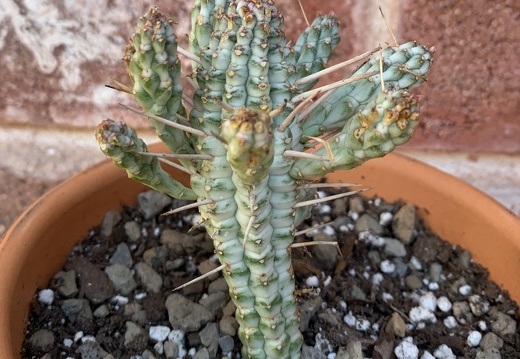
Euphorbia Mammillaris
Euphorbia Mammillaris Variegata, also known as Indian Corn Cob, is a fast-growing shrublet with thick stems that are chalky green, erect and ribbed. These stems can turn rosy pink in colder weather. At maturity, the plant can reach 8-10 inches (20-35 cm) tall.
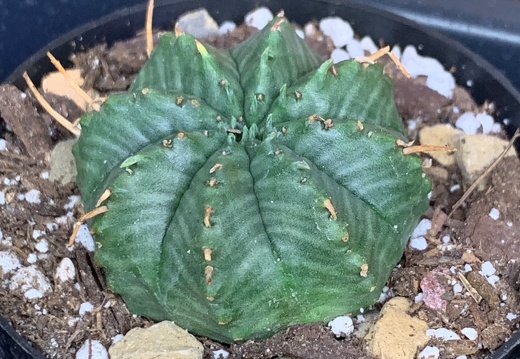
Euphorbia Meloformis
Euphorbia meloformis, called the melon spurge, is a species of flowering plant in the genus Euphorbia, native to the Cape Provinces of South Africa. A succulent, it has gained the Royal Horticultural Society's Award of Garden Merit
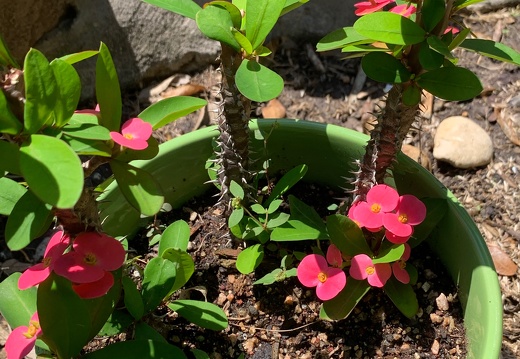
Euphorbia Milii
Euphorbia milii, the crown of thorns, Christ plant, or Christ thorn, is a species of flowering plant in the spurge family Euphorbiaceae, native to Madagascar. The species name commemorates Baron Milius, once Governor of Réunion, who introduced the species to France in 1821.
Scientific name: Euphorbia milii
Family: Euphorbiaceae
Kingdom: Plantae
Order: Malpighiales
Lowest temperature: 35 degrees Fahrenheit
Scientific name: Euphorbia milii
Family: Euphorbiaceae
Kingdom: Plantae
Order: Malpighiales
Lowest temperature: 35 degrees Fahrenheit
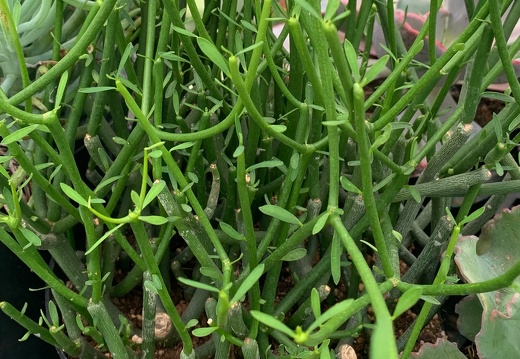
Euphorbia Tirucalli
Euphorbia tirucalli is a tree that grows in semi-arid tropical climates. A hydrocarbon plant, it produces a poisonous latex that can cause temporary blindness.
Common Name(s): Aveloz, Indian Tree Spurge, Naked Lady, Pencil Tree, Pencil Cactus, Milk Bush
Scientific Name: Euphorbia tirucalli
Family: Euphorbiaceae
Kingdom: Plantae
Order: Malpighiales
Common Name(s): Aveloz, Indian Tree Spurge, Naked Lady, Pencil Tree, Pencil Cactus, Milk Bush
Scientific Name: Euphorbia tirucalli
Family: Euphorbiaceae
Kingdom: Plantae
Order: Malpighiales
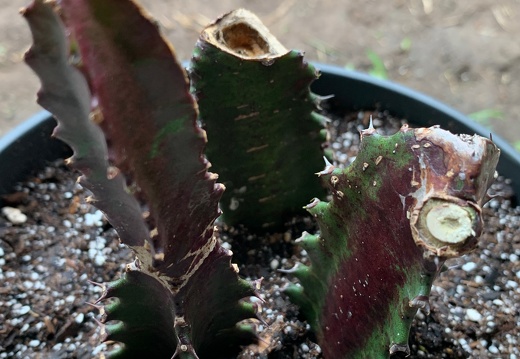
Euphorbia Trigona
Euphorbia Trigona (also known as African milk tree, cathedral cactus, Abyssinian Euphorbia, and high chaparal) is a perennial plant that originates from Central Africa.
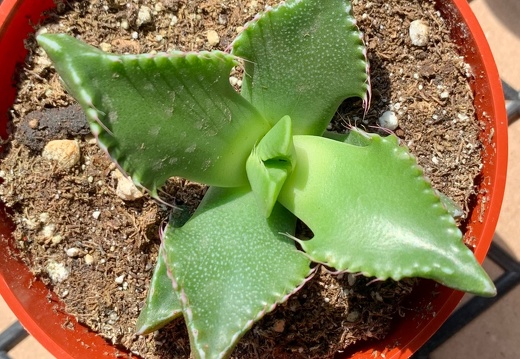
Faucaria Felina
Faucaria felina, tiger jaws, is a species of succulent plant in the family Aizoaceae. It is endemic to the southern Cape Provinces of South Africa, but also widely spread in culture. It has a clumping habit and blooms with yellow flowers.
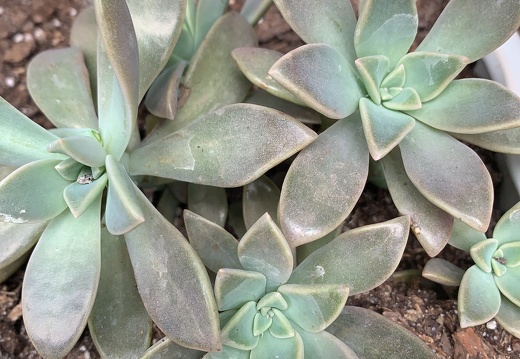
Graptopetalum Paraguayense
Graptopetalum paraguayense is a species of succulent plant in the jade plant family, Crassulaceae, that is native to Tamaulipas, Mexico. Common names include Sedum weinbergii, Mother-of-pearl-plant and Ghost plant. This is not to be confused with Monotropa uniflora which is also referred to as the “Ghost plant”.
Scientific Name: Graptopetalum Paraguayense
Family: Crassulaceae
Kingdom: Plantae
Order: Saxifragales
Scientific Name: Graptopetalum Paraguayense
Family: Crassulaceae
Kingdom: Plantae
Order: Saxifragales
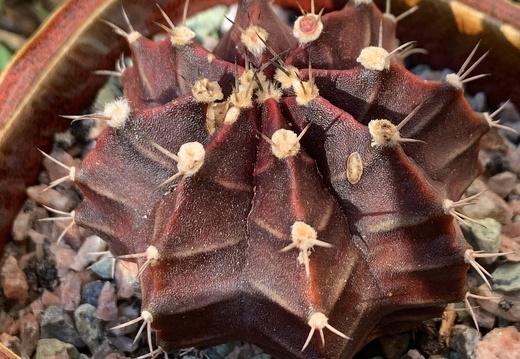
Gymnocalycium Stenopleurum
Description: Gymnocalycium stenopleurum is a small solitary cactus with with grey-green and brownish-red banded body that typically has white, fully opening flowers. Stem: Flattened globose to globose, grey-green, to 12 cm or more high, 6-12 cm in diameter. Ribs: 8-14, rounded.
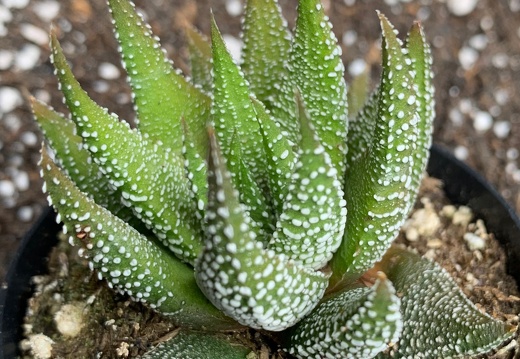
Haworthia Attenuata
Haworthiopsis attenuata, formerly Haworthia attenuata, commonly known as zebra haworthia, is a small species of succulent plant from the Eastern Cape Province, South Africa. As an ornamental, it is one of the most commonly cultivated of the Haworthiopsis species.
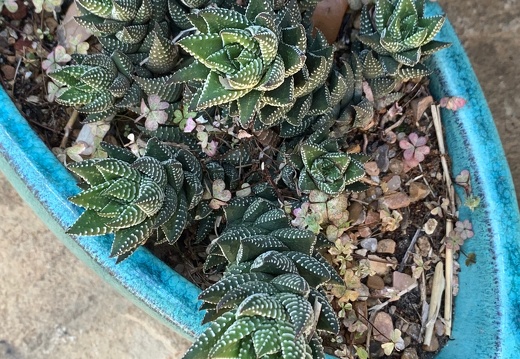
Haworthia Coarctata
Haworthiopsis coarctata, formerly Haworthia coarctata, is a species of flowering succulent plant from the Eastern Cape Province, South Africa and naturalized in Mexico. It is one of the species of Haworthiopsis that is commonly cultivated as an ornamental.
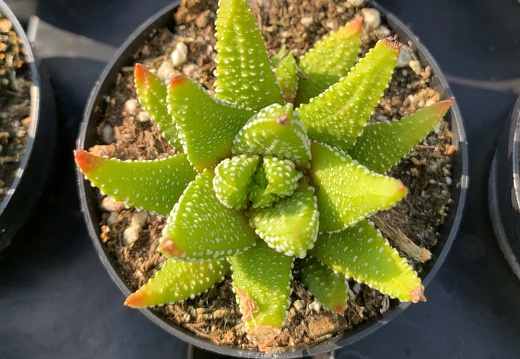
Haworthia Enon
Haworthiopsis attenuata f. tanba f/ Enon: An easy grower that makes an adorable house plant. This miniature cultivar has firm, green leaves speckled with raised white dots. ... Haworthia are able to tolerate low, indoor light, making them excellent houseplants, even for beginners.
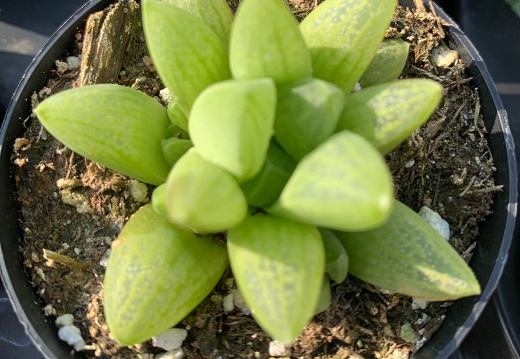
Haworthia Turgida
Haworthia turgida, also sometimes known as the windowpane plant, is a species of Haworthia native to the Cape Provinces. Its common name comes from the translucent panes on its leaves, which are similar to those of Haworthia cooperi and some other species in the genus. It grows in dense clusters of offsets from the base, and in its native habitat prefers rocky limestone or slate cliffs. The main type has pale green leaves but varies widely. Varieties include Haworthia turgida var. longibracteata (M.B.Bayer) and Haworthia turgida var. suberecta (Poelln.)
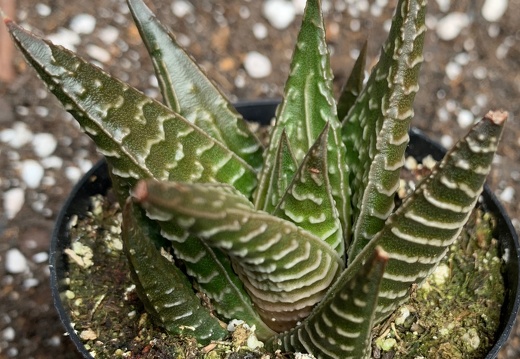
Haworthiopsis Limifolia
Haworthiopsis limifolia, formerly Haworthia limifolia, is a species of flowering plant in the genus Haworthiopsis, native to southern Africa and first described in 1910.
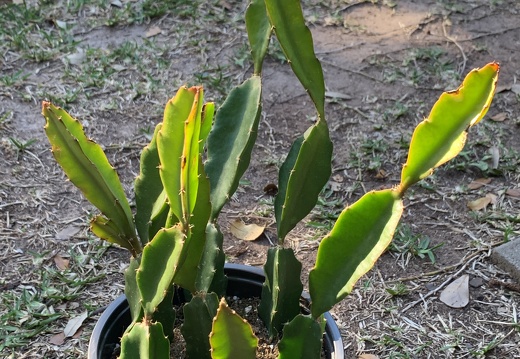
Hylocereus Undatus
Selenicereus undatus, the white-fleshed pitahaya, is a species of Cactaceae and is the most cultivated species in the genus. It is used both as an ornamental vine and as a fruit crop - the pitahaya or dragon fruit. The native origin of the species has never been resolved.
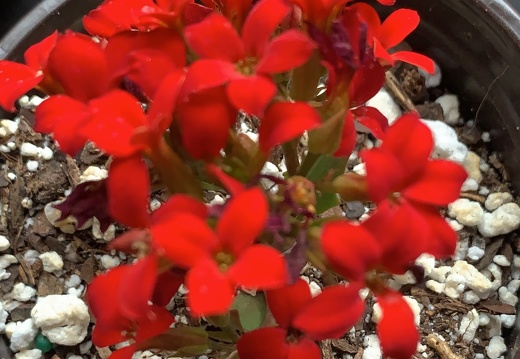
Kalanchoe Blossfeldiana
Kalanchoe blossfeldiana is a herbaceous and commonly cultivated house plant of the genus Kalanchoe native to Madagascar. It is known by the English common names flaming Katy, Christmas kalanchoe, florist kalanchoe and Madagascar widow's-thrill.
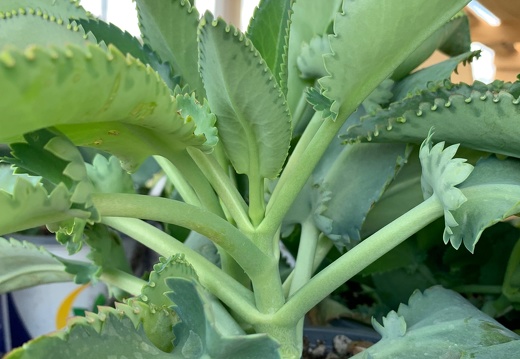
Kalanchoe Daigremontiana
Kalanchoe daigremontiana, formerly known as Bryophyllum daigremontianum and commonly called mother of thousands, alligator plant, or Mexican hat plant is a succulent plant native to Madagascar. Like other members of Bryophyllum, it can propagate vegetatively from plantlets that develop on its leaf margins.
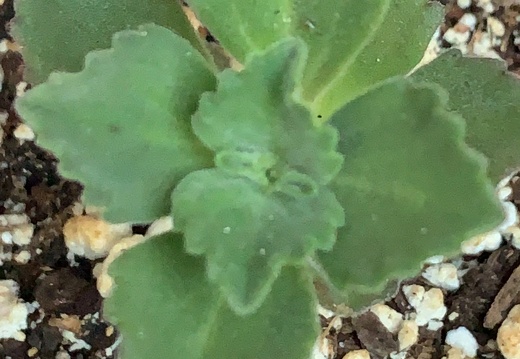
Kalanchoe Longiflora
Kalanchoe longiflora, also known as tugela cliff-kalanchoe or long-flower kalanchoe, is a species of the succulent genus Kalanchoe, in the family Crassulaceae. An obscure shrub native to South Africa, it is known for its multi-coloured foliage and yellow flowers, which bloom in autumn to winter.
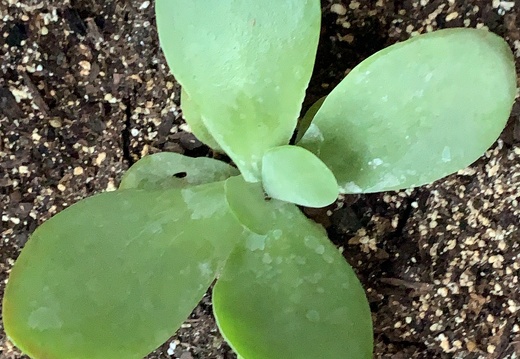
Kalanchoe Luciae
Paddle Plant
Frost Tolerance: NoMinimum Avg. Temperature: 30°F
Sun Exposure: Full Sun
Growth Habits: Over 12″ tall and wide
Watering Needs: Summer – Regular / Winter – Regular
Propagation: Offsets, seeds
Zone: 9
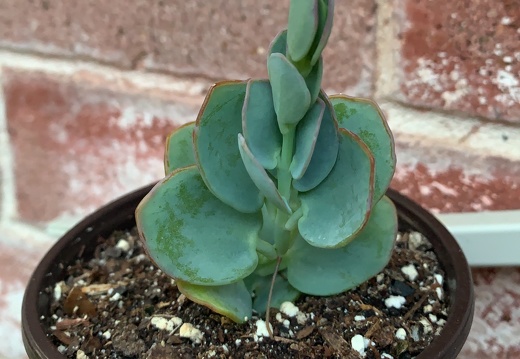
Kalanchoe Marnieriana
This blue-green succulent has thin round leaves that group up a tall, vertical stem. The leaves grow up the stem opposite of each other, facing the stem as they grow upwards. The edges of the leaves turn a reddish-pink when happily stressed. “Marnier’s Kalanchoe” adds great height to container gardens.
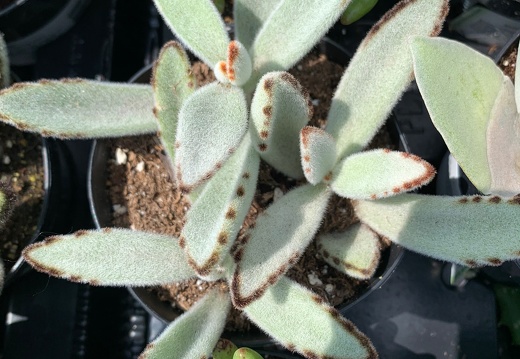
Kalanchoe Tomentosa
Kalanchoe tomentosa, also known as pussy ears or panda plant, is a succulent plant in the genus Kalanchoe. A native of Madagascar, Kalanchoe tomentosa has many different cultivars such as 'Golden Girl', 'Chocolate Soldier', 'Black Tie' and 'Teddy Bear'. It has red-rimmed leaves.
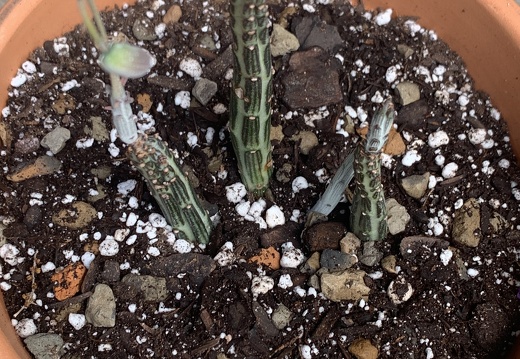
Kleinia Stapeliiformis
Kleinia stapeliiformis, also known as Senecio stapeliiformis, is an attractive succulent with pencil-like stems with purple-green patterns and soft spines along the sides. The stems are soft, fleshy, smooth, brittle, jointed, cylindrical, up to 10 inches (25 cm) long, and up to 0.8 inches (2 cm) in diameter.
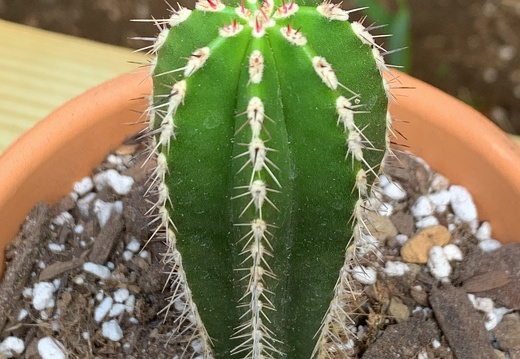
Lophocereus Marginatus
Lophocereus marginatus is a species of plant in the family Cactaceae. It is sometimes called Mexican fencepost cactus. It has columnar trunks that grow slowly to 12 feet and may reach 20 feet in height. Stems are 3 to 4 inches in diameter, with ribs 5 to 7 in.
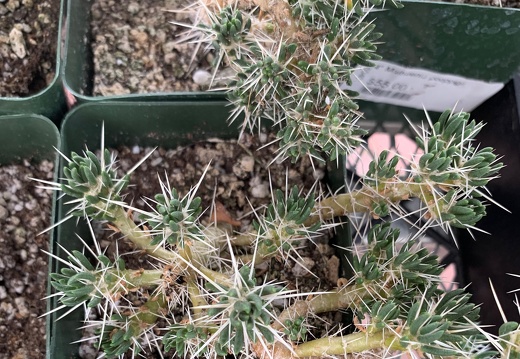
Maihuenia Poeppigii
Maihuenia Poepigii, commonly known in Chile as maihuén or hierba del guanaco, is a succulent cactus shrub native to Chile and Argentina. M. poepigii is remarkably tolerant to moisture and cold temperatures.
Care
For a balanced development, it is best to position the the Maihuenia poeppigii in a place where it is exposed to at least a few hours of direct sunlight. Water these plants only from time to time if grown outdoors, but it should be watered abundantly if grown in a pot or in the greenhouse, during the summer.
Phonetic Spelling: may-hew-EN-ee-uh po-ep-PIG-ee-eye
Scientific Name: Maihuenia poeppigii
Family: Cactaceae
Kingdom: Plantae
Genus: Maihuenia
Species: M. Poeppigii
Native to: Chile, Argentina
Rank: Species
Sun Exposure: Full to Partial Shade
Bloom Time: Late Spring
Bloom Color: Lemon-Yellow
Watering Needs: Rarely if indoors and generously if outside
Zones: 6a to 11b
Care
For a balanced development, it is best to position the the Maihuenia poeppigii in a place where it is exposed to at least a few hours of direct sunlight. Water these plants only from time to time if grown outdoors, but it should be watered abundantly if grown in a pot or in the greenhouse, during the summer.
Phonetic Spelling: may-hew-EN-ee-uh po-ep-PIG-ee-eye
Scientific Name: Maihuenia poeppigii
Family: Cactaceae
Kingdom: Plantae
Genus: Maihuenia
Species: M. Poeppigii
Native to: Chile, Argentina
Rank: Species
Sun Exposure: Full to Partial Shade
Bloom Time: Late Spring
Bloom Color: Lemon-Yellow
Watering Needs: Rarely if indoors and generously if outside
Zones: 6a to 11b
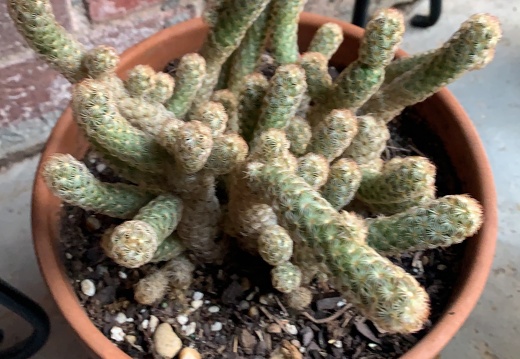
Mammillaria Elongata
Mammillaria elongata, the gold lace cactus or ladyfinger cactus, is a species of flowering plant in the family Cactaceae, native to central Mexico.
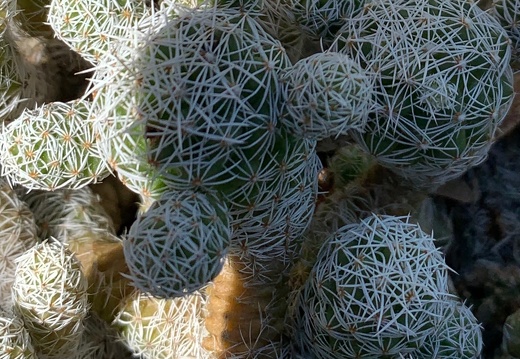
Mammillaria Gracilis Fragilis
Mammillaria gracilis fragilis, Cactus, Thimble Cactus: Mammillaria gracilis v. fragilis has a delicate and charming. It features small round bodies that are densely covered with white spines, interlaced together. These give the impression of white "thimbles." It forms large mats quickly, growing vigorously in clusters. Expect to see creamy yellow flowers in the late winter. To grow this one well, you will need gritty succulent or cactus potting soil, as well as bright light and good airflow.
